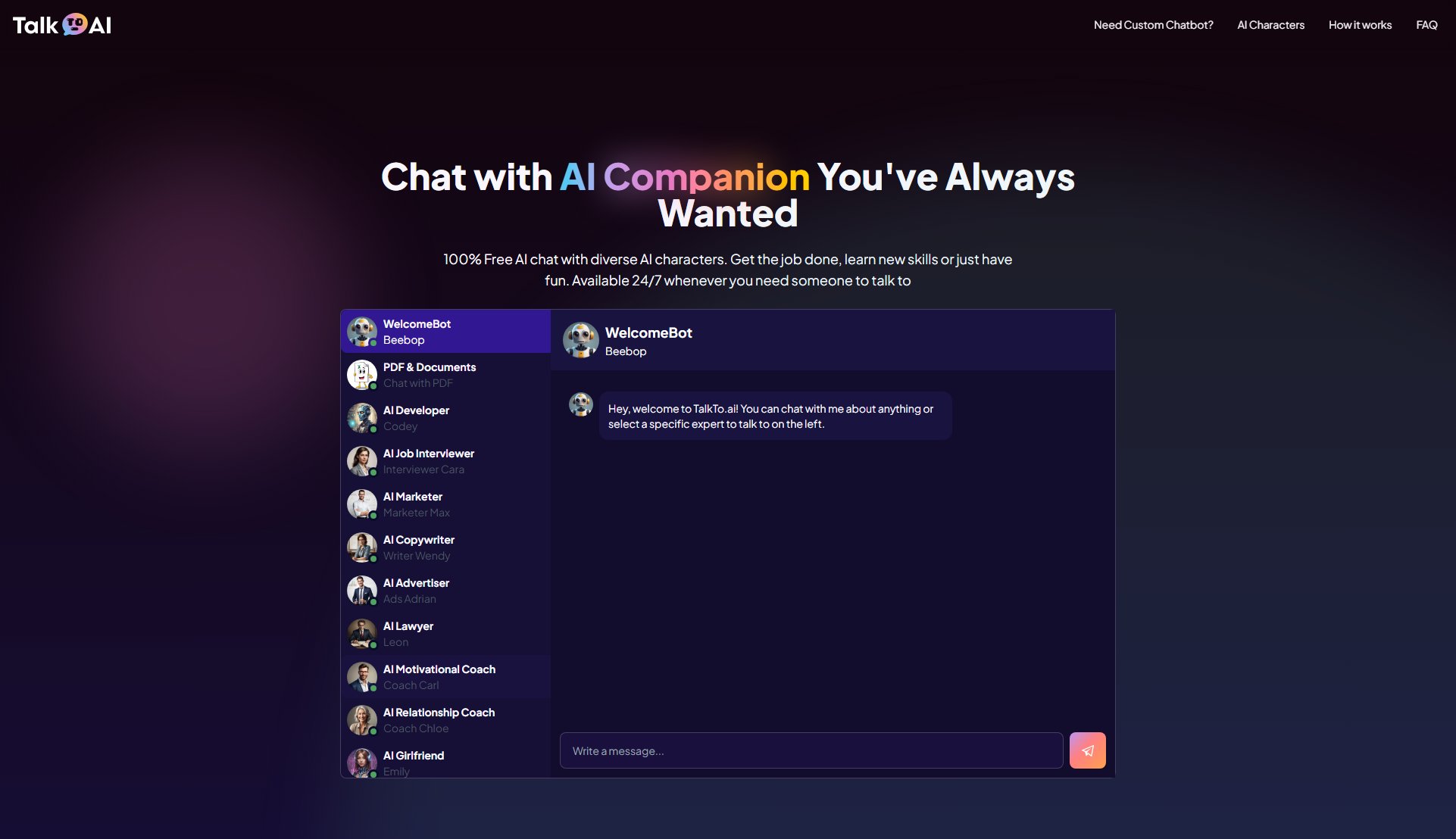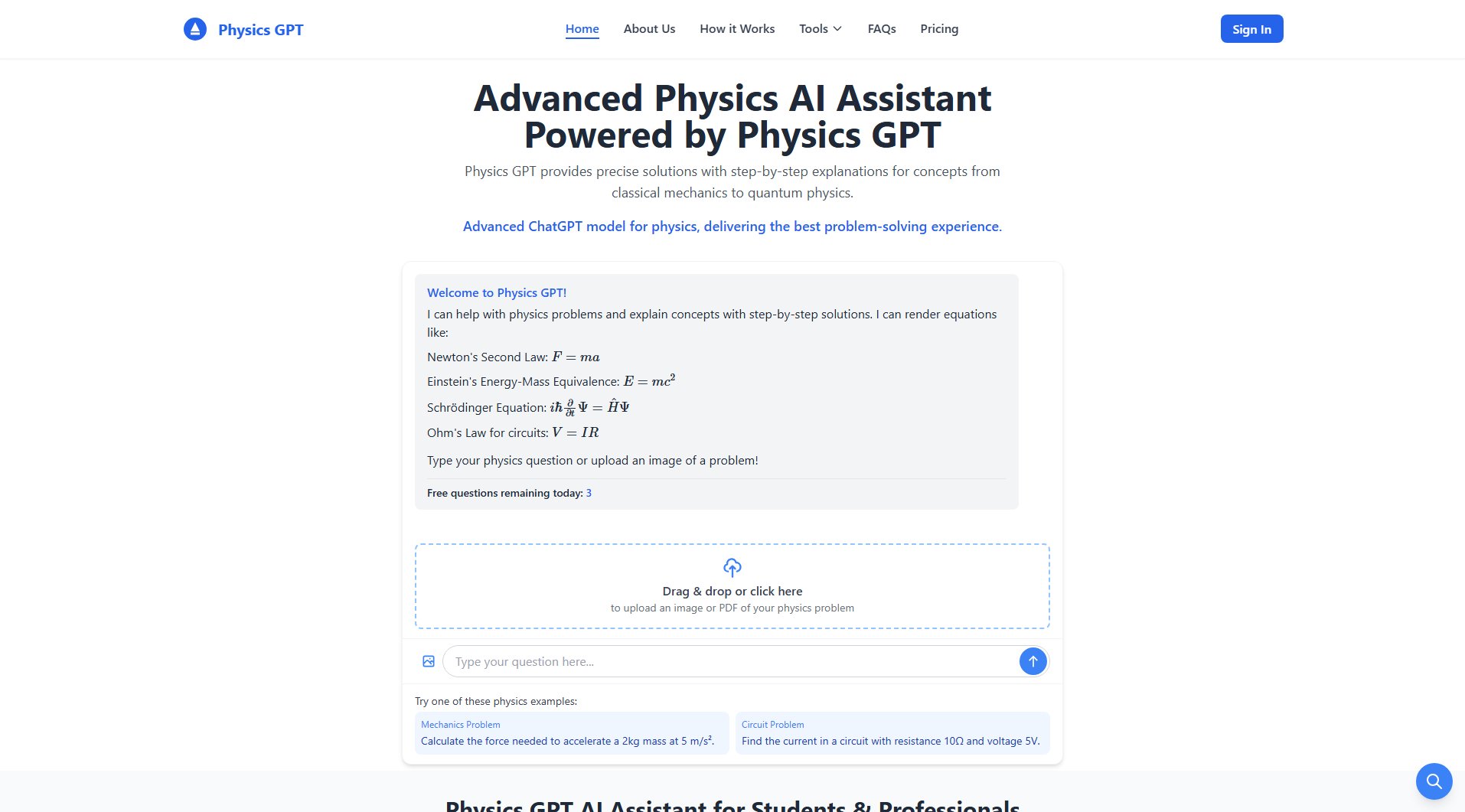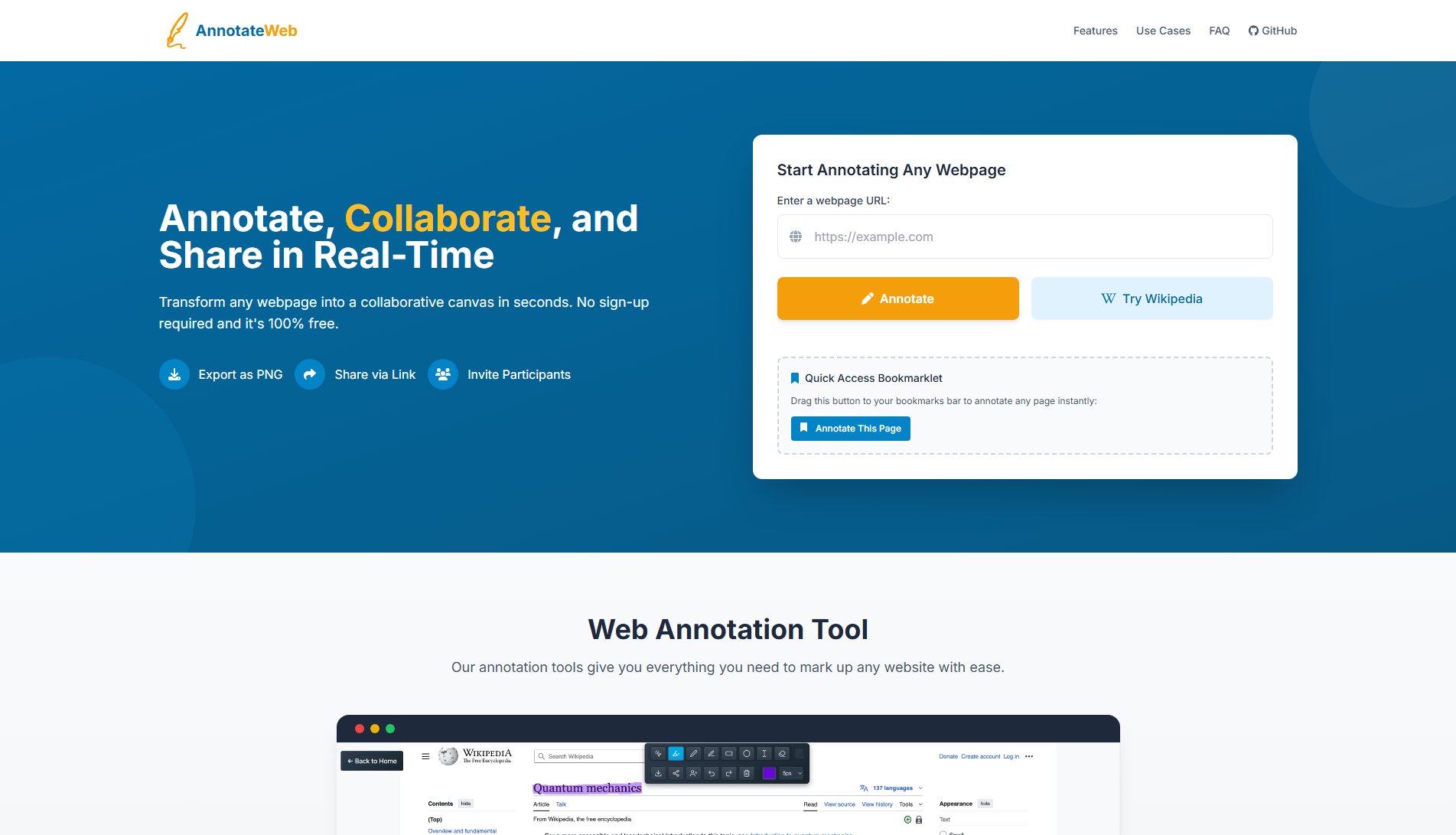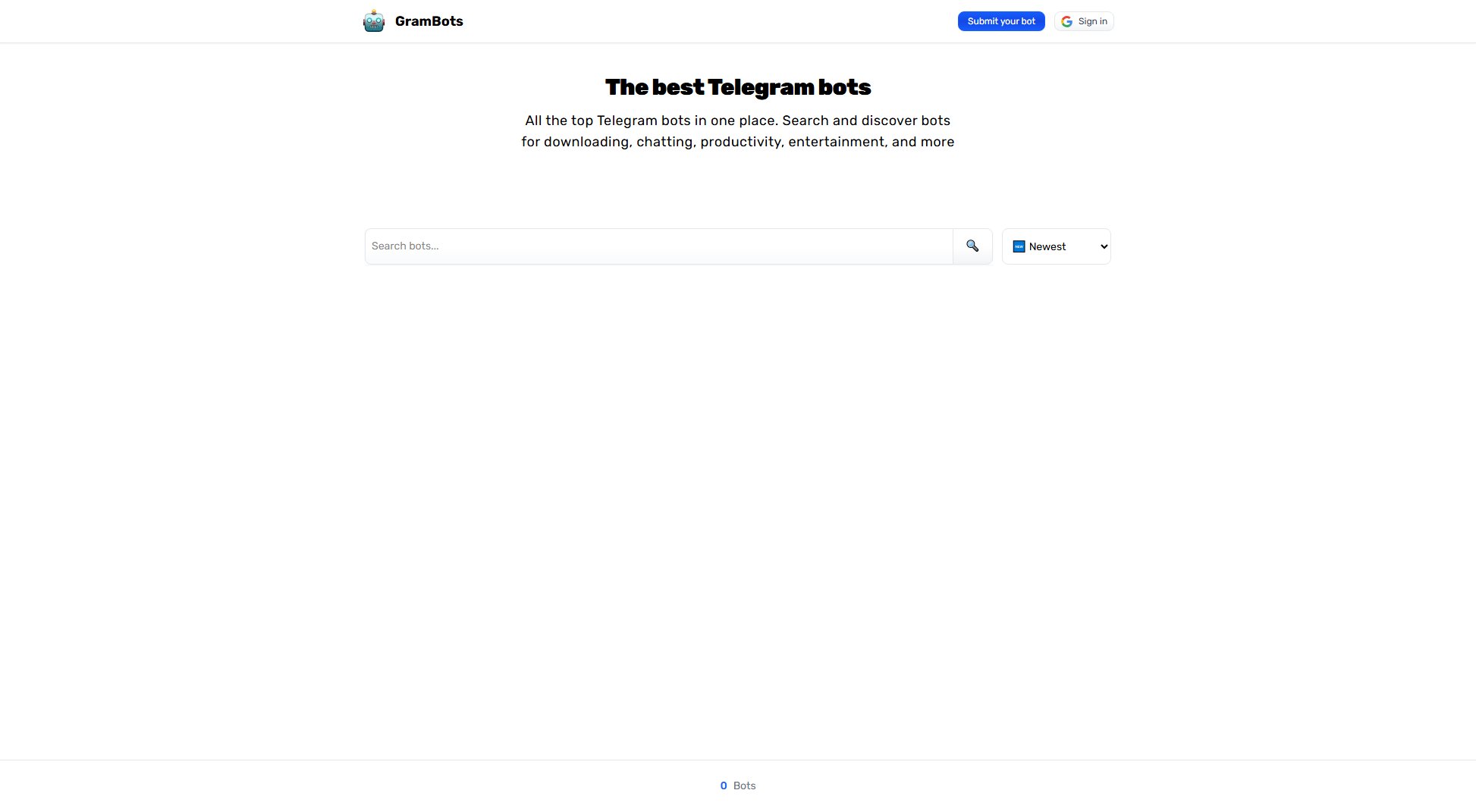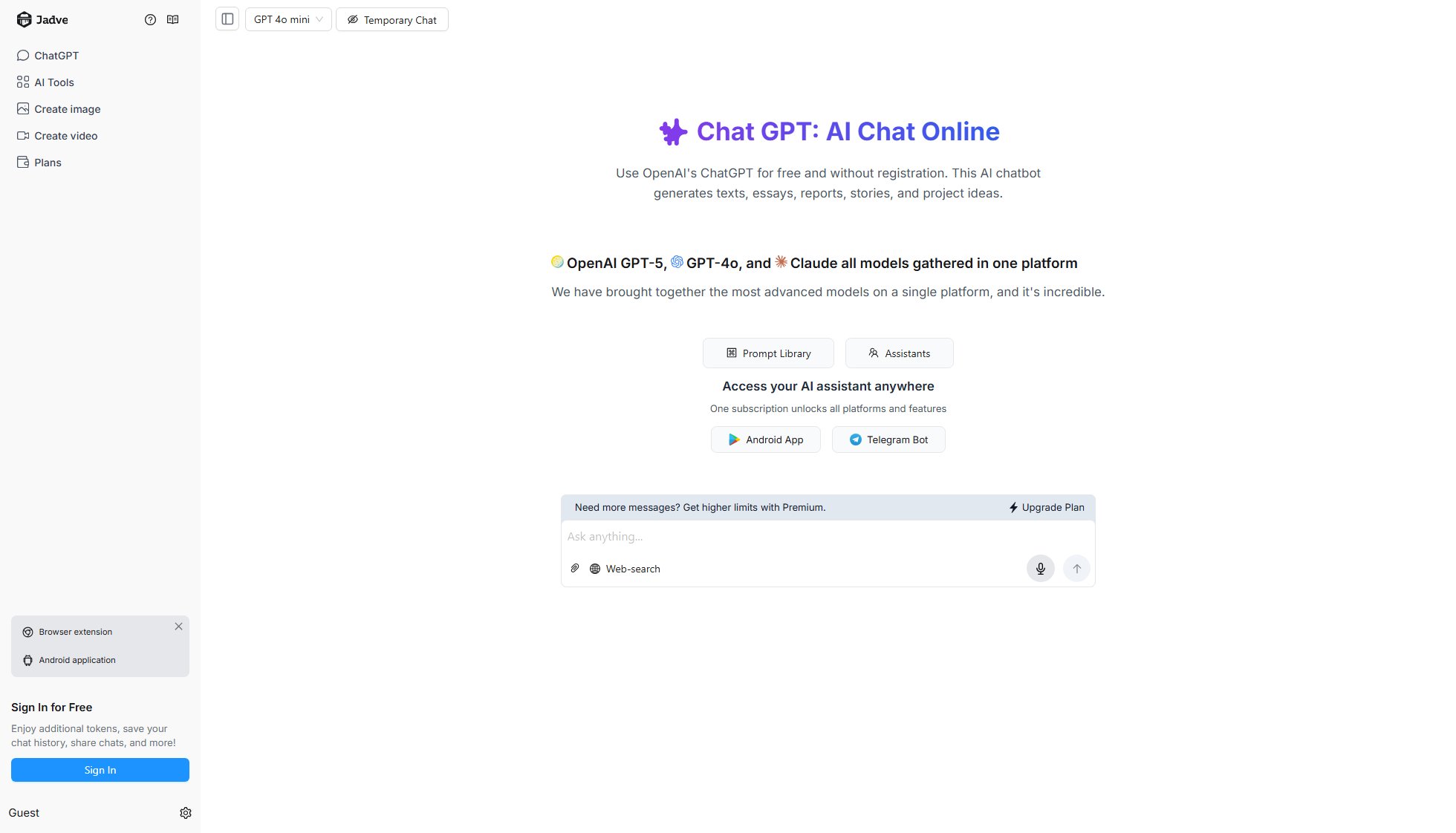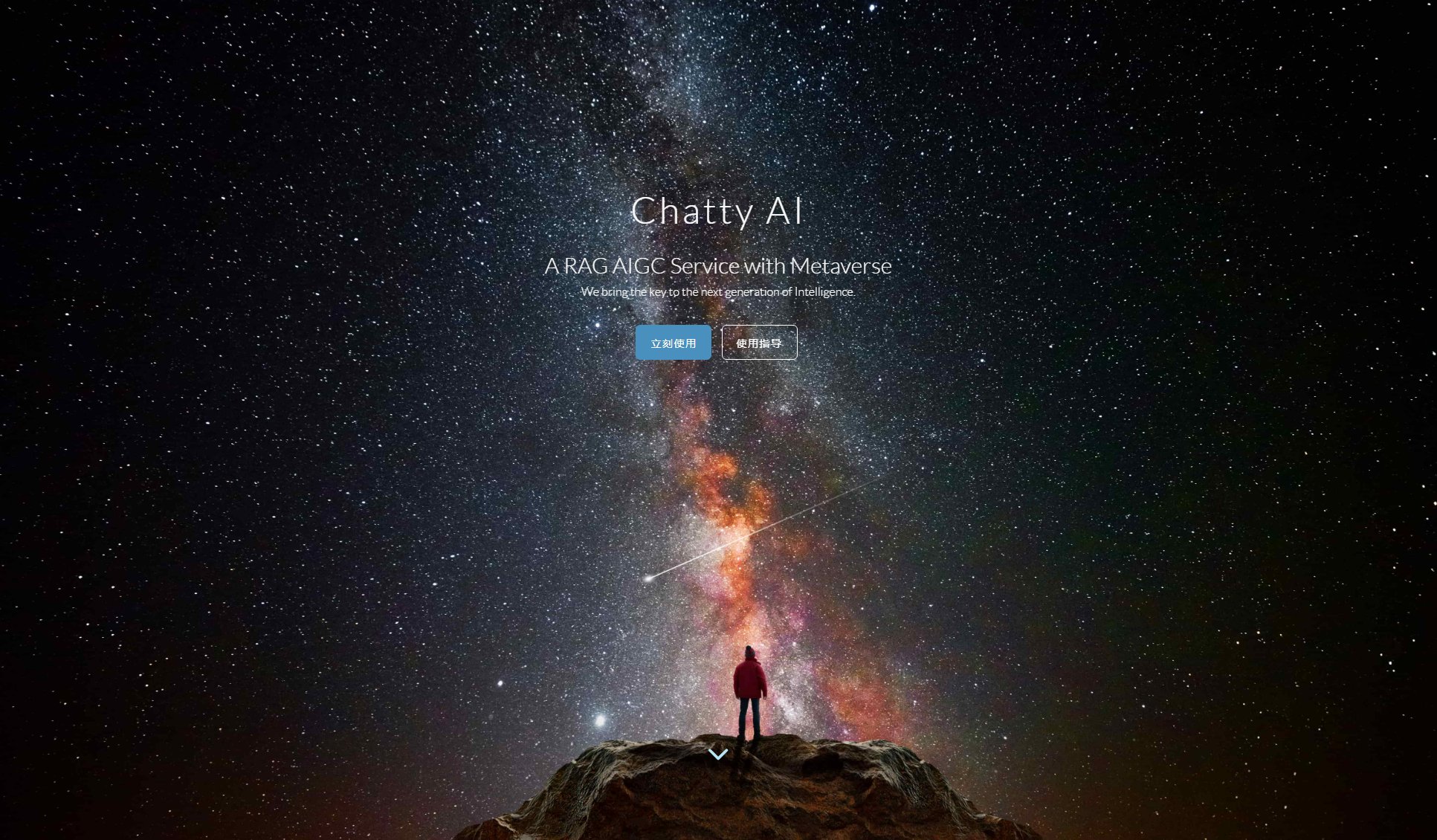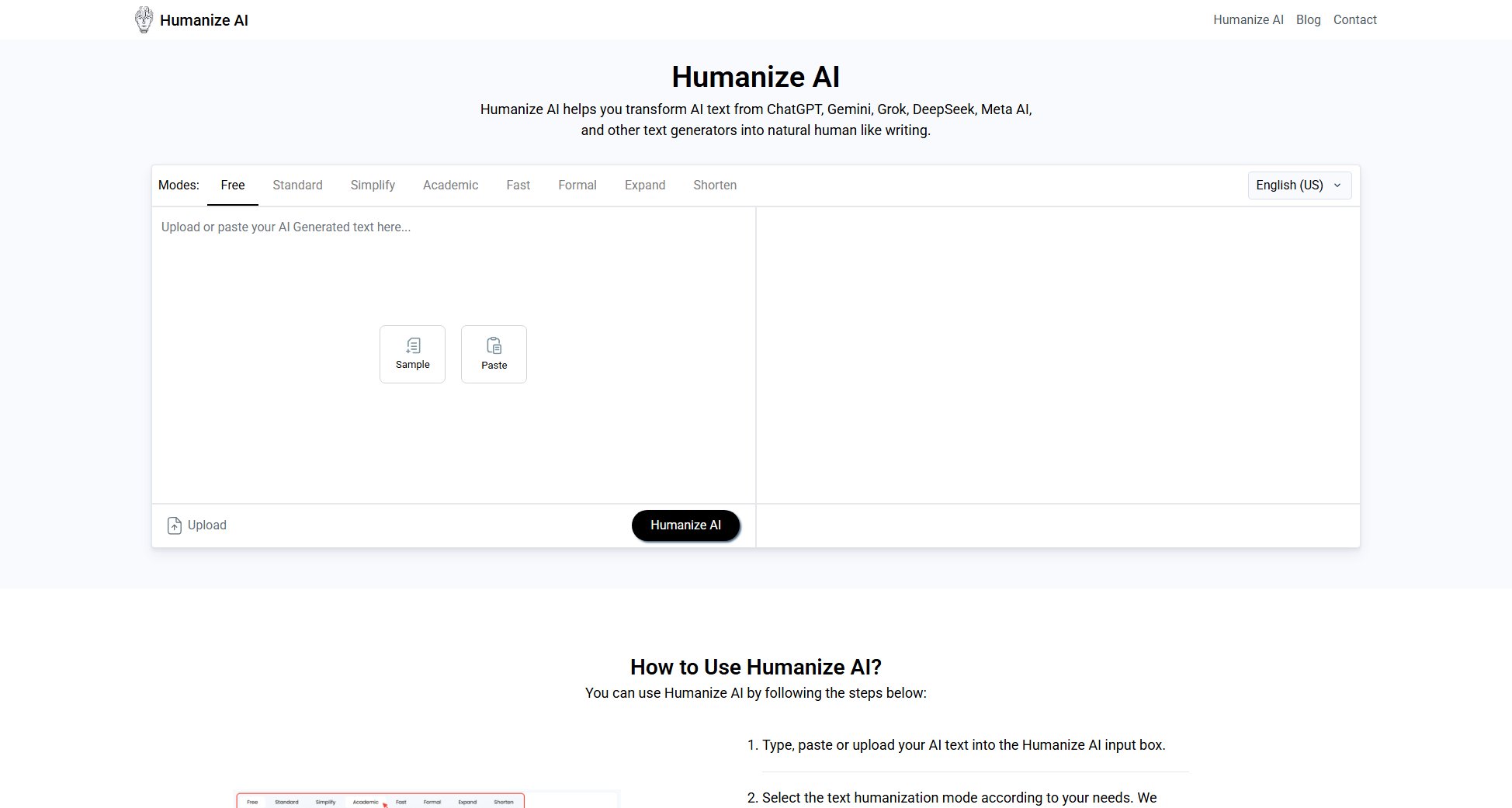ChatX
Fast, affordable AI chat powered by GPT-5 and GPT-4.1 models
What is ChatX? Complete Overview
ChatX is an AI-powered chat platform that provides instant access to advanced language models without requiring login. It offers multiple GPT variants including GPT-5 nano, GPT-5 mini, GPT-5, and GPT-4.1, each optimized for different use cases from simple queries to complex analyses. The platform supports text generation, code writing, summarization, and even includes experimental features like live human chat and audio/image processing. With high token limits (up to 1M input tokens) and knowledge cutoffs as recent as October 2024, ChatX serves both casual users and professionals needing quick, reliable AI assistance.
ChatX Interface & Screenshots
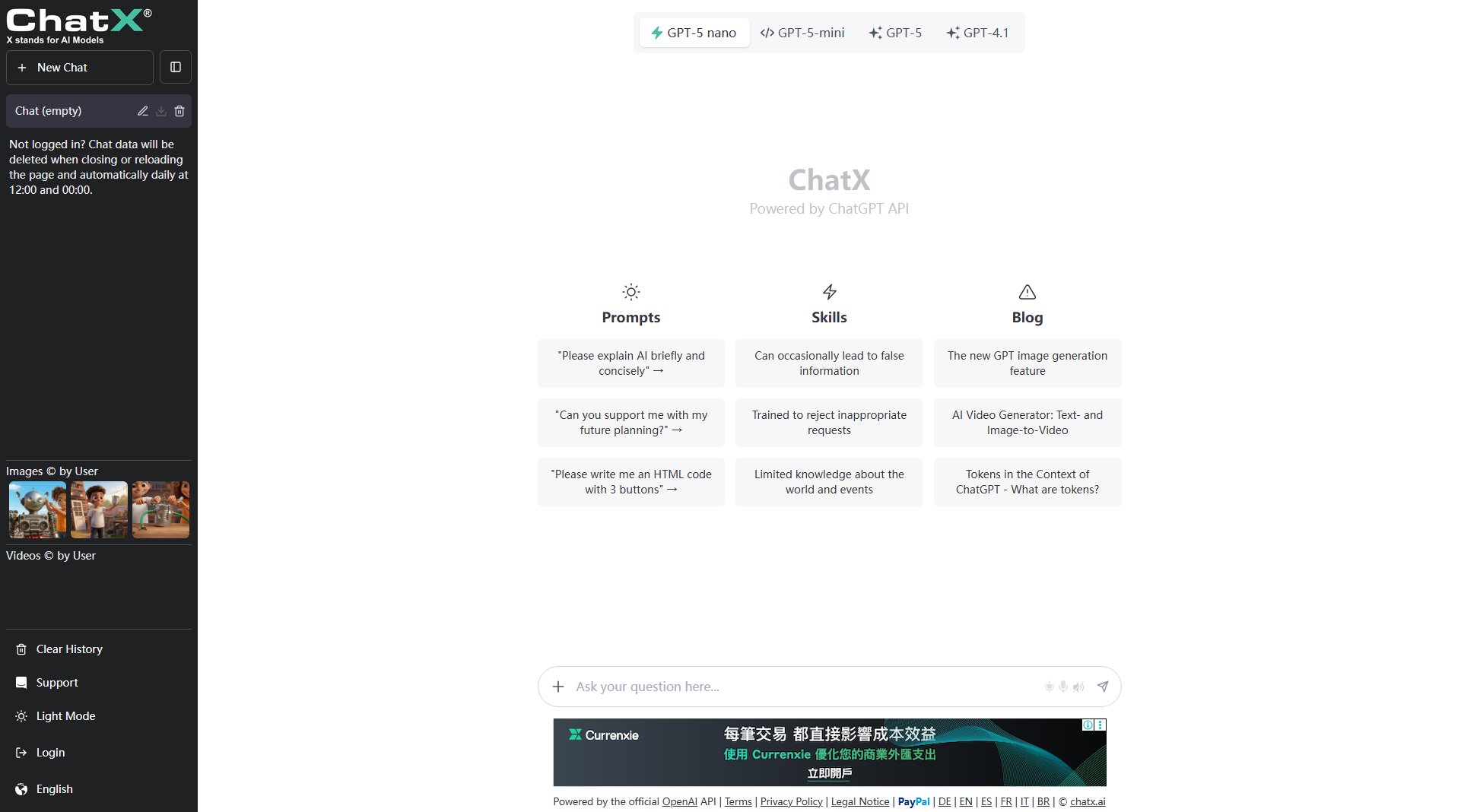
ChatX Official screenshot of the tool interface
What Can ChatX Do? Key Features
Multiple GPT Model Options
ChatX offers four specialized GPT variants: GPT-5 nano (fastest/affordable), GPT-5 mini (cost-effective), full GPT-5 (complex tasks), and GPT-4.1 (extensive knowledge). Each model has different performance characteristics and token limits, allowing users to select the optimal balance of speed, cost, and capability for their needs.
High Token Capacity
Supports exceptionally large context windows with up to 1,000,000 input tokens (GPT-4.1) and 128,000 output tokens (GPT-5 series), enabling processing of lengthy documents or maintaining extensive conversation context.
No-Login Access
Unlike many AI platforms, ChatX provides full functionality without requiring account creation or login, offering immediate access to powerful AI capabilities while preserving user privacy.
Multimedia Processing
Beyond text, ChatX can process audio files (transcription/analysis) and images (description/generation), with experimental video creation capabilities powered by Veo 3 technology.
Live Human Chat (Beta)
Unique member-to-member live chat functionality allows users to get human perspectives alongside AI responses, with special formatting for questions to distinguish them from regular conversation.
Best ChatX Use Cases & Applications
Quick Content Processing
Journalists or content creators use GPT-5 nano for rapid summarization of articles, proofreading drafts, or rephrasing content, benefiting from its fast response times for straightforward tasks.
Technical Analysis
Data scientists leverage GPT-5's high-depth responses to analyze complex datasets, interpret results, and generate comprehensive reports, utilizing the large token capacity for processing lengthy technical documents.
Multilingual Support
International teams use the platform's multiple language options (DE, EN, ES, FR, IT, BR) with GPT-4.1's strong instruction-following capabilities to bridge communication gaps across global projects.
How to Use ChatX: Step-by-Step Guide
Visit chatx.ai and immediately start typing in the chat interface - no account creation or login required.
Select your preferred GPT model from the sidebar (GPT-5 nano for speed, GPT-5 for complexity, etc.) based on your task requirements.
Type your query or upload files (text, audio, or image) for processing. Use the '?' mark prefix for questions to activate special formatting in live human chats.
Adjust response parameters as needed - for GPT-5 you can set depth of thought (minimal to high) and response length (low to high detail).
Receive and utilize the AI-generated response. For complex tasks, you can continue the conversation within the large context window.
ChatX Pros and Cons: Honest Review
Pros
Considerations
Is ChatX Worth It? FAQ & Reviews
GPT-5 nano is optimized for speed and cost-efficiency on simple tasks, while full GPT-5 offers deeper analysis capabilities with adjustable response depth and detail levels, better suited for complex problem-solving.
The website mentions commercial licenses but doesn't specify terms. Users should review the Legal Notice and Terms of Service for commercial usage policies.
Knowledge cutoffs vary by model - June 2024 for most, except GPT-5 which has information up to October 2024. The platform uses official OpenAI API with these defined knowledge limits.
